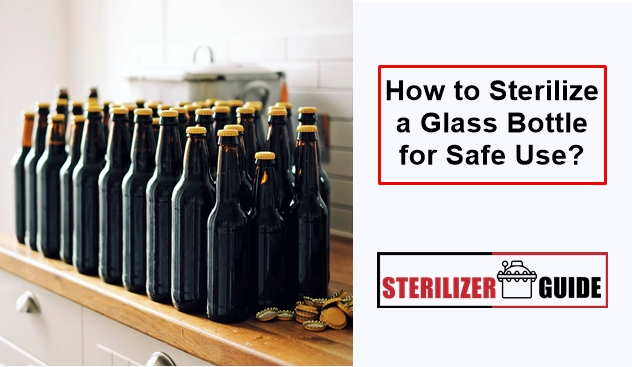Glass bottles are a typical household item that is used for a variety of things, including preserving homemade sauces, keeping beverages, and even feeding babies.
However, if not adequately sanitized, these bottles may contain dangerous bacteria and pathogens. To maintain ideal hygiene and avoid any health hazards, glass bottle cleanliness, and safety are essential.
This article provides detailed directions on how to sterilize a glass bottle for safe usage, serving as a thorough reference to DIY glass bottle sterilization. This book will provide you with the skills and knowledge you need, whether you’re a new mom needing to sterilize baby bottles or a homebrew enthusiast wishing to disinfect your brewing equipment.
Understanding Glass Bottle Sterilization
Sterilization is the process of eliminating or killing all forms of microorganisms, including bacteria, viruses, and fungi, from a surface or object. It is a crucial step in maintaining hygiene and preventing the transmission of diseases. In the context of glass bottle sterilization, it involves eliminating any potential contaminants that may be present on the bottle’s surface or inside it.
Why is sterilizing glass bottles necessary?
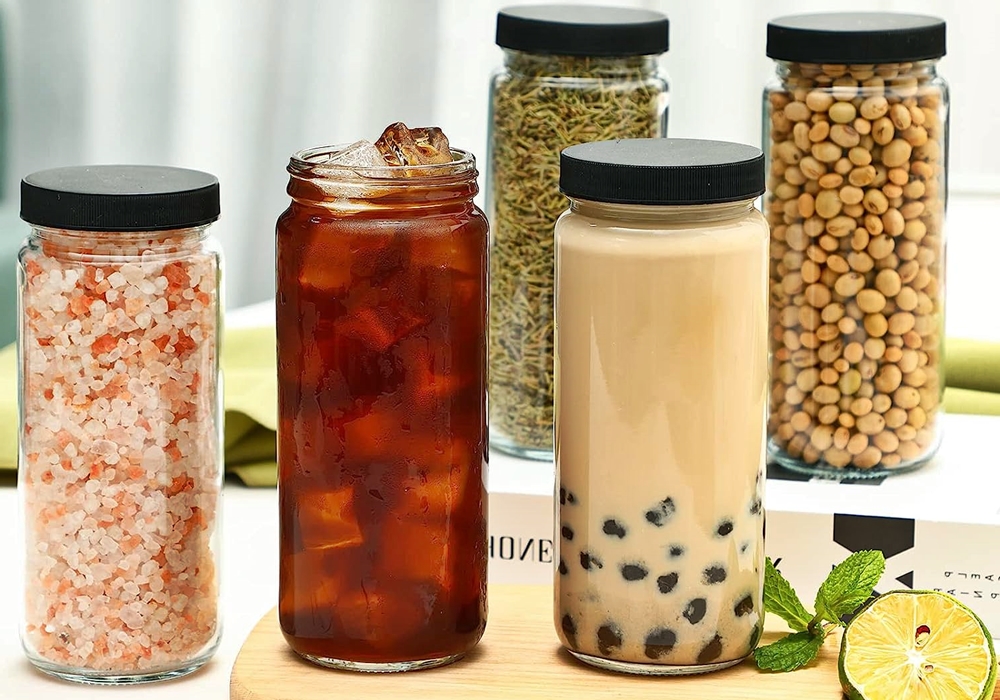
Glass bottles must be sterilized to maintain the highest standards of cleanliness and security. During production, handling, or storage, glass bottles may be exposed to a variety of pollutants, including mold, bacteria, and other dangerous microbes.
When bottles are used to store beverages, food, or infant formula, the failure to sterilize them before use might result in the proliferation of these germs, increasing the risk of contamination and perhaps resulting in health problems.
Common contaminants and risks associated with unsterilized bottles
Glass bottles that have not been sterilized may contain dangerous bacteria like E. coli, Salmonella, or Listeria that can lead to illnesses and food poisoning. In unsterilized bottles, molds and yeast can also flourish, causing meals and liquids to deteriorate. Additionally, if bottles are not thoroughly sanitized, some viruses, such as the norovirus or hepatitis A, can live on their surfaces and provide a transmission danger.
Using bottles that haven’t been sterilised has serious hazards. Foodborne infections and digestive issues can arise while consuming food or beverages from unsterilized bottles. Infants exposed to dangerous microorganisms when receiving baby formula in unsterilized bottles run the risk of developing infections and digestive problems.
Additionally, if food and beverages are not properly sterilized, yeast and molds can quickly deteriorate the flavor, consistency, and quality of foods and beverages.
Glass bottle sterilization must be prioritized in order to guarantee the highest levels of safety and hygiene. Whether they are used for infant bottles, home brewing, or food storage, sterilized bottles must always be used to stop the spread of dangerous bacteria. We may shield ourselves and our loved ones from the potential health risks linked with unsterilized glass bottles by taking the required precautions.
Importance of using sterilized bottles for various purposes (e.g., baby bottles, homebrewing, food storage)
Glass bottles that have been sterilized are necessary in many facets of life. First off, sterilization of baby bottles is essential to safeguard children with vulnerable immune systems from dangerous germs and viruses that can cause infections or digestive problems. Little ones can eat in a secure and hygienic environment thanks to properly sterilized bottles.
Glass bottle sterilization is essential in the world of homebrewing. It guarantees a sterile and regulated environment, avoiding the development of undesirable microbes that may taint beer or wine. The integrity and flavor of handmade beverages are preserved by using sterilized bottles, producing a high-quality final product.
Glass bottles that have been sanitized are also essential for food storage. The safe storage of handmade sauces, preserves, and pickled foods requires the use of sterilized bottles. Contamination is avoided, and the freshness and quality of the items that are stored are retained, thanks to adequate sanitation.
People can increase the shelf life of their home-made culinary masterpieces while lowering any possible health hazards by storing them in sterilized bottles.
Knowing the value of sterilization and the dangers of using unsterilized bottles emphasizes the significance of utilizing sterilized bottles for particular uses. Glass bottle sterilization is required for cleanliness and safety, whether it’s to guarantee a secure environment for newborns to feed, preserve the quality of handmade beverages, or keep food products fresh.
Preparing Glass Bottles for Sterilization
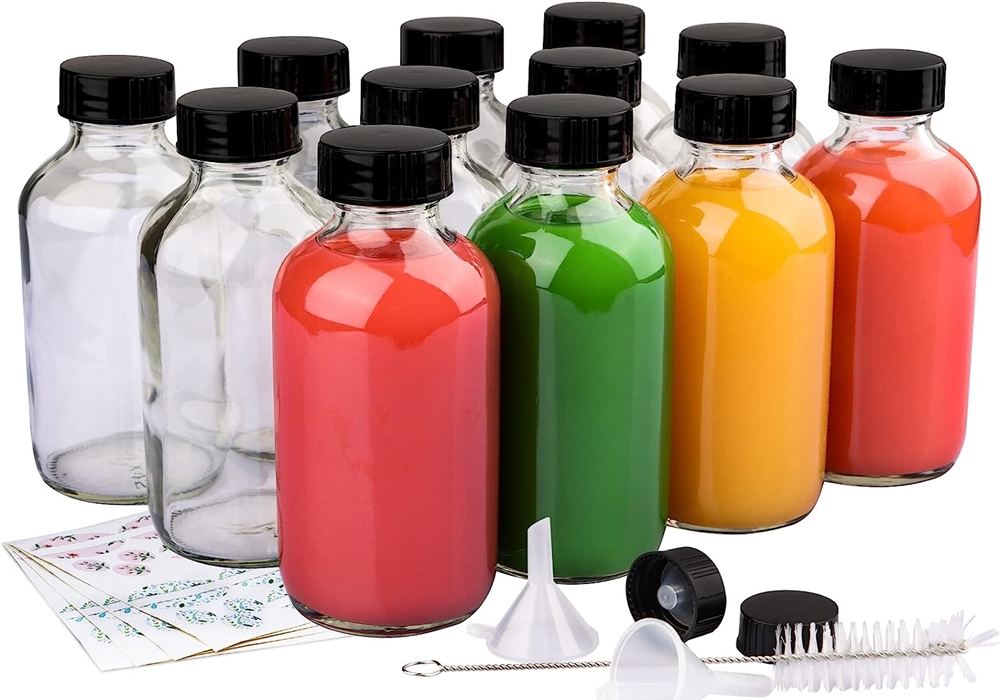
Preparing for sterilization is a crucial step in ensuring the cleanliness and safety of glass bottles. Before undertaking the sterilization process, it is important to gather the necessary materials and equipment, such as the bottles themselves, cleaning supplies, a sterilizing agent, and tongs or heat-resistant gloves. This ensures that you have everything at hand to effectively sterilize the bottles.
Gather necessary materials and equipment
Collect the required supplies and equipment before beginning the sterilization of glass bottles. This comprises glass bottles that can withstand heat and be sterilized, ensuring a sufficient supply to sterilize the required quantity.
Cleaning supplies are necessary to get the bottles ready. Have clean water, bottle brush, and dish soap on hand. With the help of these tools, the bottles may be cleaned thoroughly, removing residue and grime.
Pick a suitable sterilizing method, such as steam, boiling water, or chemical sterilizing agents. Choose the approach that best meets your needs and adhere to the usage guidelines. Make sure you have a saucepan or sterilization device big enough to fit the glass bottles if you’re using boiling water or steam.
Use tongs or heat-resistant gloves for safety during the sterilizing process. By using these tools, you can properly handle the hot bottles, lowering your chance of injury or burns.
You can efficiently and safely get ready for the glass bottle sterilization procedure by gathering the required goods and tools, such as glass bottles, cleaning supplies, sterilizing agents, pots or sterilization equipment, and tongs or heat-resistant gloves. The sterilizing will go smoothly and successfully if you have everything you need.
You may also read: How to Sterilize Jars for Pickles? Quick and Easy Guide
Cleaning the glass bottle before sterilization
It is crucial to properly clean the glass bottle before sterilization. To begin, rinse the bottle in warm water to get rid of any debris that is readily apparent. Then, wash the interior and outside of the bottle with a bottle brush and dish soap, paying special attention to the neck and bottom parts.
Rinse the bottle well in clean water to get rid of all soap residue. Cleaning correctly guarantees that the sterilizing procedure is successful by getting rid of impurities like dirt and bacteria.
Importance of inspecting the bottle for cracks or damages
It is essential to check the glass bottle for any cracks, chips, or damage before continuing with sterilizing. When utilized subsequently, a damaged bottle might not be able to resist the sterilization process or pose a safety issue.
It is recommended to use a fresh bottle if you find any cracks or damage to the current one. By checking the bottle, you can be confident that you are using a sturdy, secure container that can withstand sterilization and subsequent usage.
You can make sure that the environment is ready for glass bottle sterilization by gathering the required tools and supplies, cleaning the glass properly, and checking it for fractures or damage. You will have clean and secure bottles for a variety of uses thanks to this because it creates the conditions for efficient sterilization.
Methods of Glass Bottle Sterilization
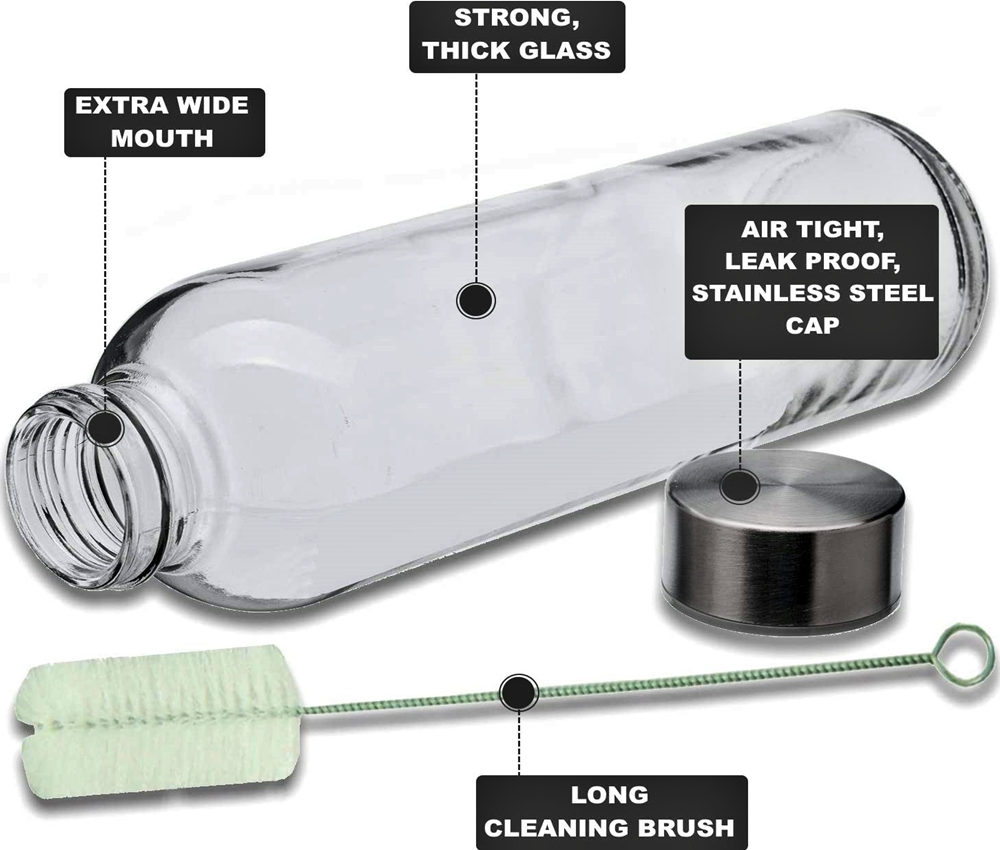
Different procedures are used in glass bottle sterilization methods to guarantee the cleanliness and security of the containers. These techniques make use of a variety of techniques, including boiling, steam sterilization, and chemical sterilizing agents.
When it comes to sterilizing glass bottles, people may make educated selections if they are aware of the exact steps involved, how long each sterilization procedure lasts, what precautions to take, and what benefits and drawbacks each approach has.
Boiling method for glass bottle sterilization
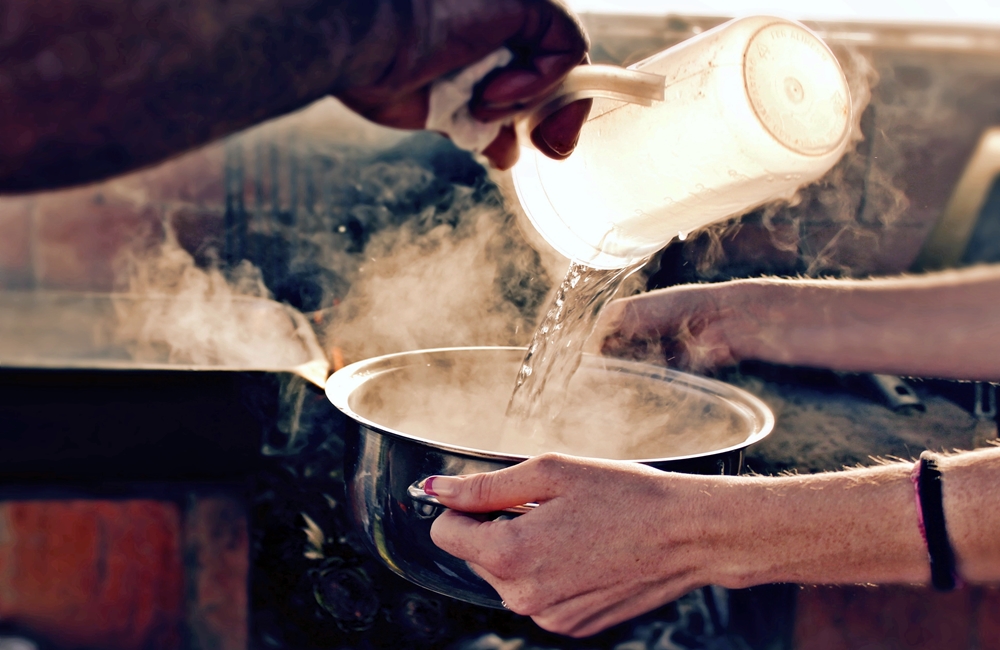
The boiling method is a common and effective way to sterilize glass bottles. It involves the following steps:
a. Thoroughly clean the glass bottle using soap and water.
b. Place the cleaned bottle in a pot filled with enough water to fully submerge it.
c. Bring the water to a rolling boil.
d. Allow the bottle to boil in the water for a specific duration, usually around 10 to 15 minutes.
e. Use tongs or heat-resistant gloves to carefully remove the bottle from the boiling water.
Duration and precautions for boiling sterilization method
Usually, the glass bottle needs to be boiled for 10 to 15 minutes. This time frame guarantees adequate heat exposure to get rid of dangerous germs. It’s crucial to stick to the suggested time frame and not go beyond it to prevent potential bottle damage.
To ensure safety when boiling glass bottles, take the necessary precautions. To avoid burns, handle the hot bottles with tongs or heat-resistant gloves. In order to maintain optimum heat circulation and sterilization, avoid packing the pot too tightly.
Advantages and limitations of boiling sterilization method
The boiling approach has a number of benefits. It is a simple strategy that saves money and needs little equipment. Many different microorganisms, including bacteria, viruses, and fungi, can be effectively eliminated by boiling. The majority of glass bottle types are also compatible with it.
The boiling procedure does have some drawbacks, though. Heat-sensitive items or delicate glass bottles that might be harmed by the high temperatures might not be appropriate for it. Additionally, boiling may not entirely eradicate all types of bacteria and may not remove obvious stains or residue. Alternative techniques like steam sterilization or chemical sterilizing solutions may be more appropriate when a higher level of sterilization is required.
You may efficiently use the boiling method for sterilizing glass bottles if you are aware of the steps involved, the recommended length and safety measures, as well as the benefits and drawbacks of this technique.
Chemical method for glass bottle sterilization
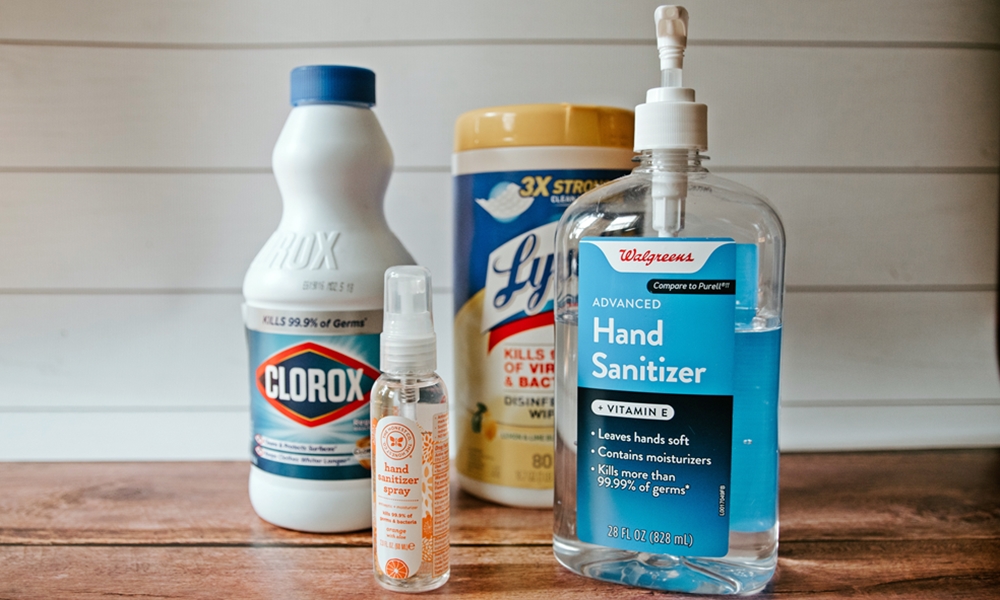
Chemical sterilization entails using agents like hydrogen peroxide or bleach to get rid of bacteria on glass bottles. These substances are commonly available and have potent antibacterial effects.
Proper dilution ratios and safety precautions
It is essential to adhere to the appropriate dilution ratios given by the manufacturer while employing chemical sterilizing agents. Proper solution dilution guarantees efficient sterilization while lowering the chance of glass bottle breakage. To safeguard oneself from any potential risks related to the chemicals, it is also crucial to wear gloves and make sure there is adequate ventilation.
Step-by-step process of chemical sterilization
Start by giving glass bottles a thorough cleaning with soap and water before chemically sterilizing them. Make sure to use the proper dilution ratio, and prepare the sterilizing solution in accordance with the manufacturer’s instructions.
Pour the solution over the cleaned glass bottles for the specified amount of time to allow the chemical agent to kill any bacteria. Finally, thoroughly rinse the bottles in clean water to get rid of any remaining chemicals.
Advantages and limitations of chemical sterilization
Chemical sterilization has some benefits, such as its accessibility and potency in eliminating a variety of pathogens. When alternative techniques, such as boiling or steam sterilization, are not appropriate, it can be a practical choice.
However, may offer drawbacks, such as the potential for chemical residue if cleaned thoroughly. It is also crucial to take into account any possible dangers or allergies connected to the particular sterilizing chemical being utilized.
People can effectively use chemical sterilization for glass bottle sterilization by comprehending the overview of chemical sterilizing agents, adhering to suitable dilution ratios and safety precautions, understanding the step-by-step method, and taking the benefits and limitations into consideration.
Steam sterilization method for glass bottle sterilization
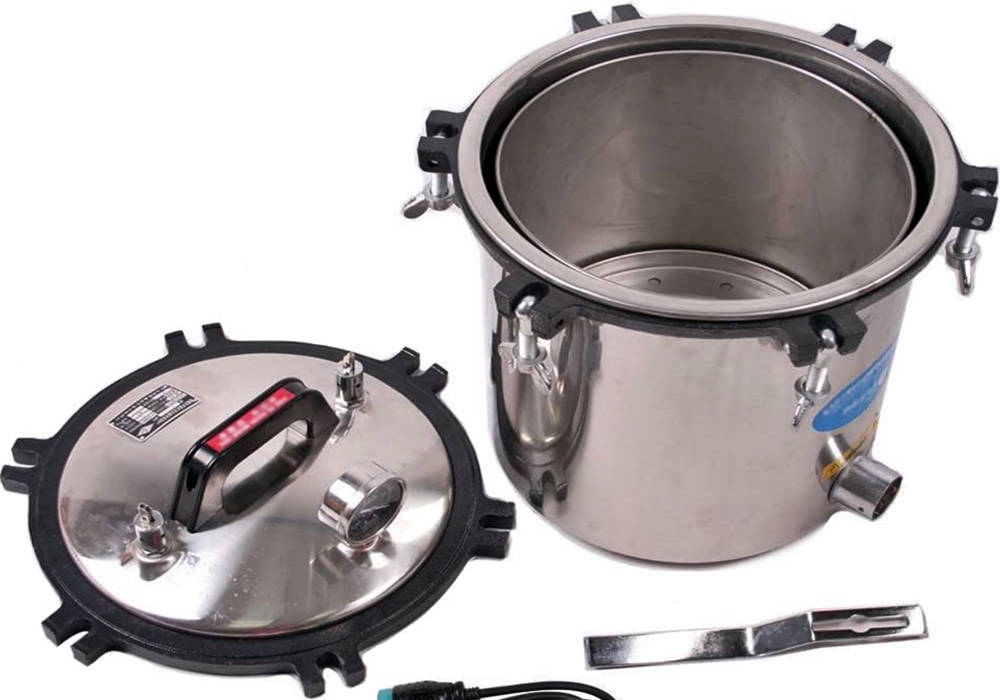
Glass bottles that have undergone steam sterilization, which uses high-temperature steam, are free of bacteria. Autoclaves, which are frequently used in medical and laboratory settings, and steam sterilizers intended for household use are examples of prevalent techniques. These techniques make use of steam’s potent sterilizing properties.
Available options for home steam sterilization
There are several options for performing steam sterilization at home. There are many readily available electric steam sterilizers made specifically for baby bottles and other small things. The glass bottles are kept clean and effectively sterilized by these systems, which employ steam to generate a regulated sterilizing environment.
Step-by-step process of steam sterilization
Glass bottles must first be cleaned with soap and water before being steam sterilized. Make sure to disassemble the bottles and to separate any removable components. Place the bottles in the steam sterilizer’s appropriate location, or adhere to the maker’s instructions.
Start the sterilization process, allowing the steam to permeate the bottles and kill any microbes that may be present. Before using the bottles, carefully remove them from the cycle and let them cool.
You may also read: How To Sterilize Canning Jars? [Ultimate Guide]
Advantages and limitations of steam sterilization
With the availability of electric steam sterilizers, steam sterilization is convenient for use at home and effective in eliminating a wide variety of bacteria. It’s a moderate approach that doesn’t include any chemicals.
However, be constrained by the requirement for specialized apparatus like electric sterilizers or autoclaves. In order to maintain the sterilizing equipment’s efficacy, it is also crucial to ensure adequate maintenance and cleaning.
People can confidently use steam sterilization for glass bottle sterilization, ensuring cleanliness and safety, by understanding the introduction to steam sterilization methods, exploring available options for home steam sterilization, adhering to the step-by-step process, and taking the benefits and limitations into consideration.
UV sterilization method for glass bottle sterilization
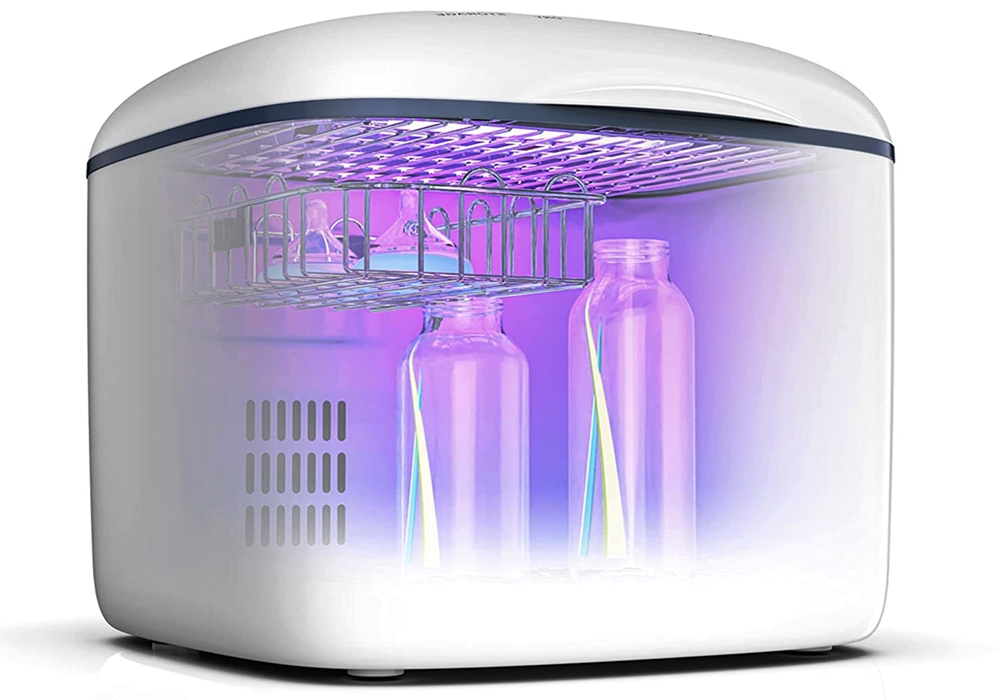
A technique called UV sterilization uses ultraviolet light to eliminate bacteria on glass bottles. Particularly UV-C light is renowned for its germicidal qualities and potency in eradicating bacteria, viruses, and other dangerous organisms. Glass bottles may be quickly and effectively sanitized with UV sterilization.
Types of UV sterilizers available for home use
For residential use, a variety of UV sterilizers are available. These consist of UV sterilizer boxes, UV sterilizer cabinets, and portable UV sterilizer wands. Each type has unique capabilities and features, allowing users to pick the one that best suits their requirements.
Precautions and guidelines for UV sterilization
When employing UV sterilization techniques, proper safeguards must be taken. Use UV sterilizers made exclusively for glass bottles, and adhere to the manufacturer’s recommendations for exposure times and distances. Additionally, it’s important to avoid getting UV radiation directly in your eyes and on your skin because it might be dangerous.
Step-by-step process of UV sterilization
Glass bottles should first be properly cleaned with soap and water before being UV sterilized. After the bottles have been thoroughly cleaned and dried, put them inside the UV sterilizer as directed. Make sure the bottles are exposed to UV light for the necessary amount of time before starting the sterilizing process. After the bottles have been sterilized, carefully take them from the sterilizer.
Advantages and limitations of UV sterilization
UV sterilization has a number of benefits, including a relatively short sterilization time and the capacity to effectively eradicate bacteria without the use of chemicals. Additionally, it is a dry sterilizing technique that removes all moisture from the glass bottles.
The necessity to maintain proper exposure and placing the bottles within the sterilizer are two constraints of UV sterilization, though. Certain bottle shapes or materials that are not transparent to UV light might not be acceptable.
People can use UV sterilization as a substitute for sterilizing glass bottles by learning about it and its efficacy, investigating the different UV sterilizers that can be used at home, taking safety precautions, adhering to guidelines, and following the step-by-step procedure.
Additional Tips and Considerations for glass bottle sterilization
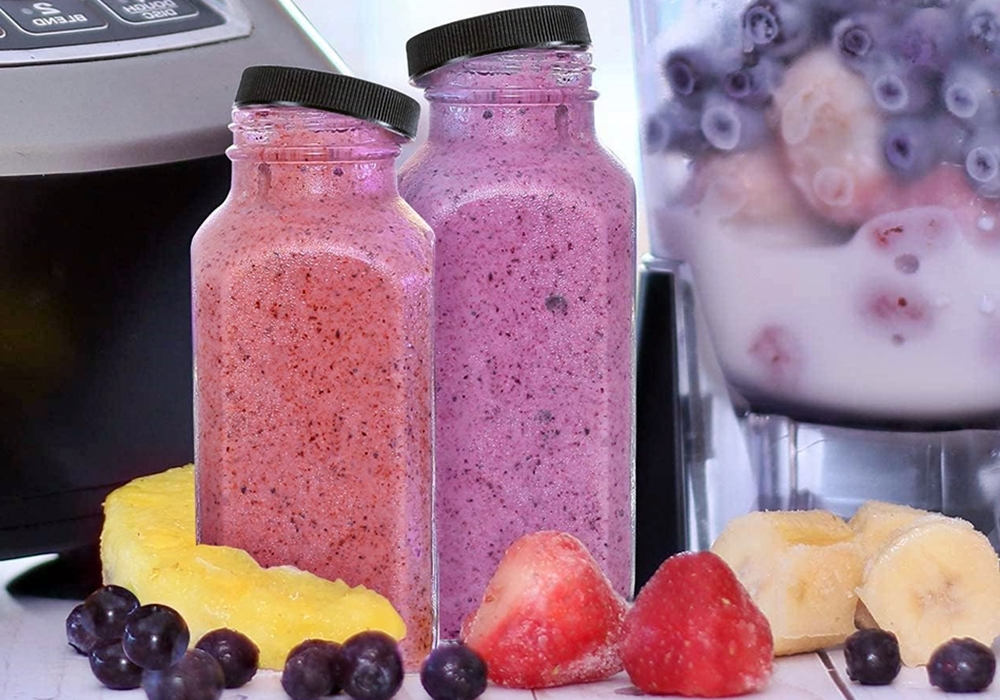
Glass bottles must be stored carefully after being sterilized in order to keep them clean. Before storing, make sure the bottles are totally dry to avoid the growth of mold or germs. Keep the bottles dry and clean, away from any potential pollutants, in a cabinet or pantry.
Frequency of sterilization for different purposes
Depending on the intended use, the frequency of glass bottle sterilization may change. It is typically advised to sanitize baby bottles before the first usage and subsequently on a frequent basis until the child reaches a particular age. To preserve the quality of their brews, homebrewers can sterilize bottles before each use.
Sterilization may be required when making homemade sauces, preserves, or pickled foods for storage purposes. When choosing the frequency of sterilization, take into account the particular needs and specifications of your intended use.
You may also read: How To Sanitize Bottle Caps Properly?
Cleaning and maintaining sterilization equipment
To ensure the efficiency of sterilizing equipment, proper cleaning and maintenance are essential. Follow the manufacturer’s cleaning and maintenance guidelines, which may involve frequent descaling, replacing filters or other parts, and conducting cyclical inspections. The equipment performs best and lasts longer when it is kept clean and well-maintained.
Troubleshooting common issues during sterilization
You might run across typical problems during the sterilization procedure that can reduce the sterilization’s efficacy. Unsuitable pressure or temperature, insufficient exposure time, or equipment faults are a few frequent problems. If you experience any problems, see the manufacturer’s troubleshooting manual or get help to fix the issue quickly and guarantee proper sterilization.
You can improve the efficacy and efficiency of your glass bottle sterilization practices by taking into account these extra suggestions and factors, including proper storage for sterilized bottles, figuring out how frequently to sterilize for various purposes, maintaining sterilization equipment, and troubleshooting typical problems.
Wrapping Up!
Sterilization of glass bottles is crucial to ensuring their safety during use in a variety of situations. plays a key role in preserving hygiene and protecting people’s health, particularly when used for things like baby bottles, homebrewing, and food preservation.
We explored a number of glass bottle sterilizing techniques in this guide. The choice of approach relies on the needs and preferences of the individual and has advantages and limitations.
For safe use, we encourage readers to give glass bottle sterilization top priority. People may make sure that their glass bottles are hygienic, high-quality, and safe by using the right sterilization techniques, obtaining the required supplies, and being aware of the risks connected with unsterilized bottles.
Sterilizing glass bottles shows a dedication to upholding a clean and healthy environment, whether they are used for feeding newborns, brewing beverages, or preserving handmade goods.
Let’s prioritize sterilization to safeguard our health and the health of our loved ones while also reaping the advantages of using glass bottles in a secure and sanitary manner.

